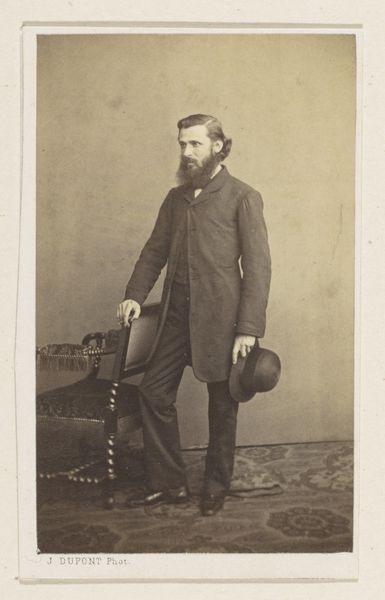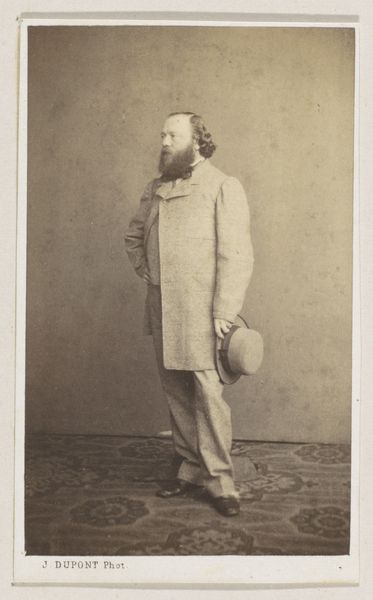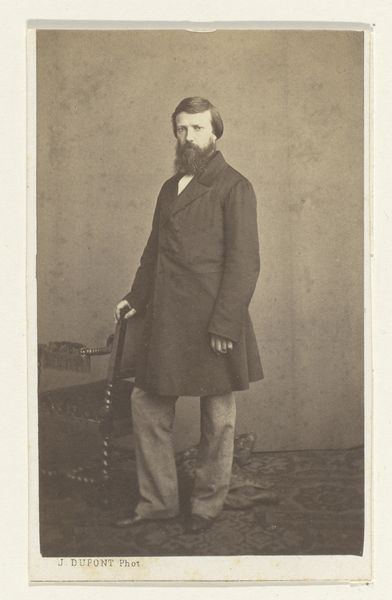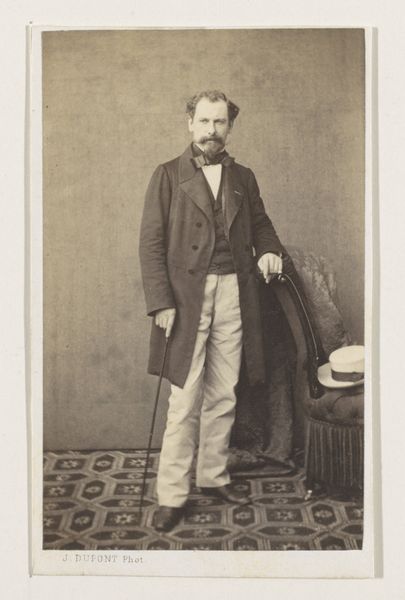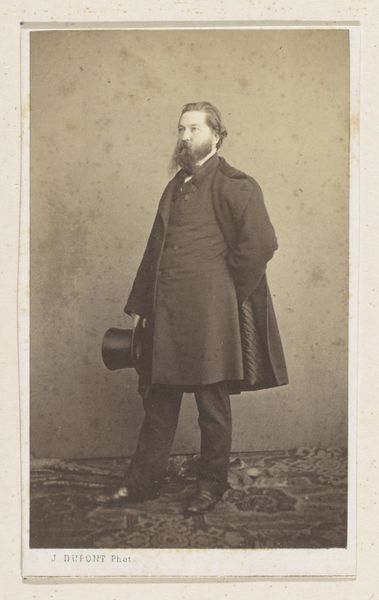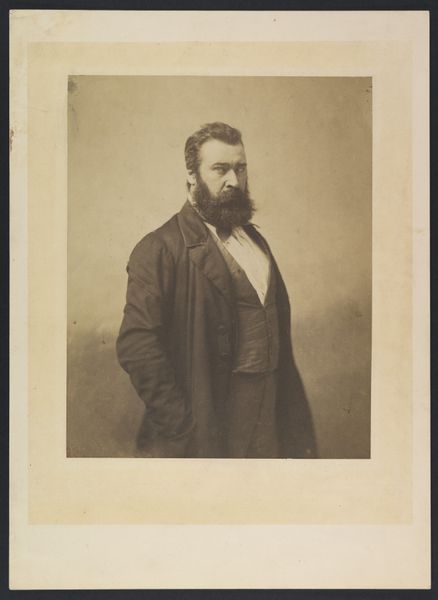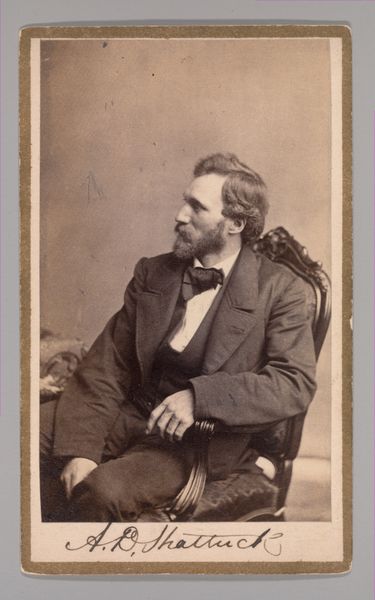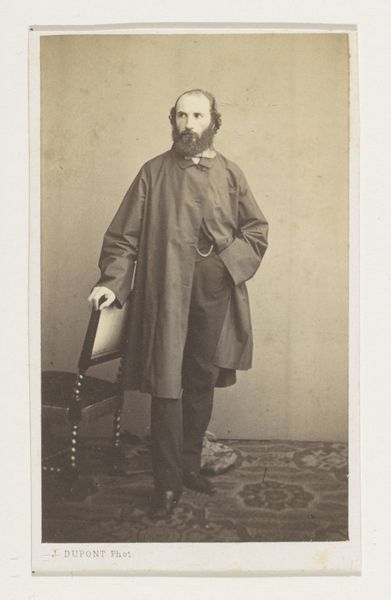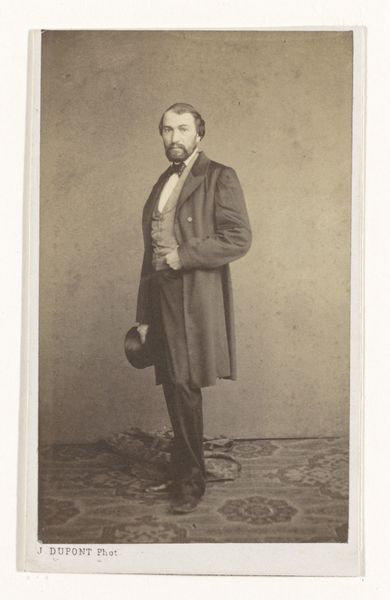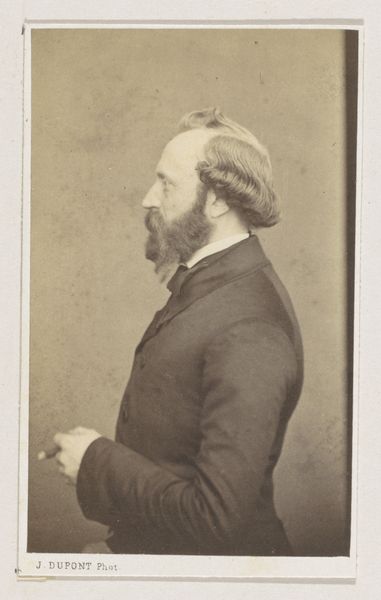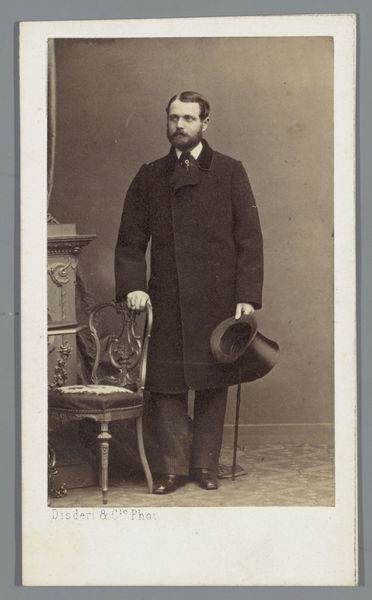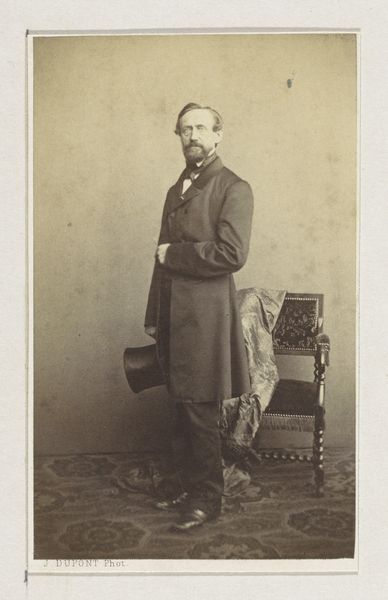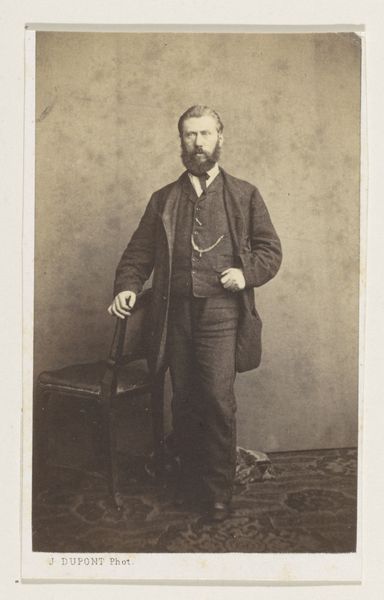
photography, gelatin-silver-print
#
portrait
#
photography
#
gelatin-silver-print
#
realism
Dimensions: height 102 mm, width 61 mm
Copyright: Rijks Museum: Open Domain
Curator: Oh, this gelatin silver print from 1861 immediately feels like stepping back in time. Look at the detail captured! Editor: It has a kind of somber stillness to it, doesn’t it? Like a staged tableau, and a slightly melancholic one, I might add. Curator: Indeed. What we have here is "Portret van de schilder Johann Bernhard Wittkamp, ten voeten uit," a portrait of the painter Johann Bernhard Wittkamp, made by Joseph Dupont. Full-length portraits like this were quite a statement back then. Editor: It's all in the stance, isn’t it? The way he leans, seemingly casual, but so deliberately composed. His hand rests on the chair's back almost as if it's a prop. I see in that casual composure a signal of wealth, intellect, status. A quiet assertion of himself. Curator: It’s interesting you mention "props," since he is leaning against the chair and has the perfect drapery. What’s compelling to me is that everything in this photograph communicates stability, except for Wittkamp’s wild, ungroomed beard, giving me the impression of controlled chaos! It evokes that inner world of creativity threatening to burst through a facade of decorum. Editor: A very fitting touch. Yes, absolutely. The untamed beard stands in stark contrast to his meticulous attire, the symmetry of his vest, the faint stripe on his trousers—almost like he's battling his public self and his personal passions. It speaks to me of the Romantics. I suppose it also illustrates, in a single snapshot, a key artistic struggle, the battle between tradition and modernism in 19th-century art. Curator: Beautifully put. Perhaps Dupont, in crafting this portrait, wasn’t just capturing a likeness but also hinting at the inner workings of an artistic soul. The subdued tones in the photograph—the grays and browns—reinforce this introspective atmosphere. It’s more than just a portrait; it’s a study of a man and an era. Editor: I think that by using photography instead of paint Dupont elevated his subject beyond portraiture, so this has an archival purpose—something documentary. He is saying “remember me.” In a way, the real triumph of the image is its timelessness—despite being of its time, the portrait somehow captures something universal about the act of creation and the artist's relationship with the world. It certainly speaks to us now.
Comments
No comments
Be the first to comment and join the conversation on the ultimate creative platform.
